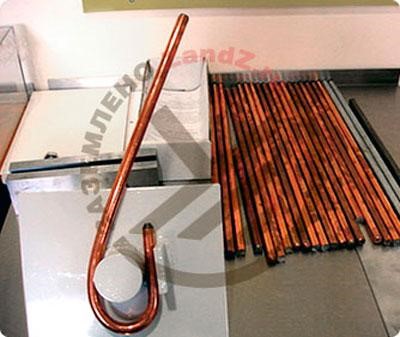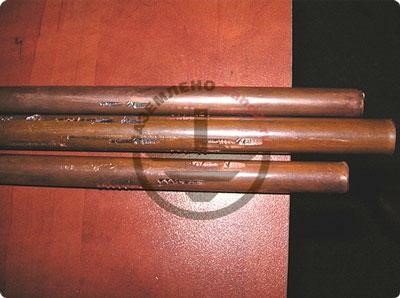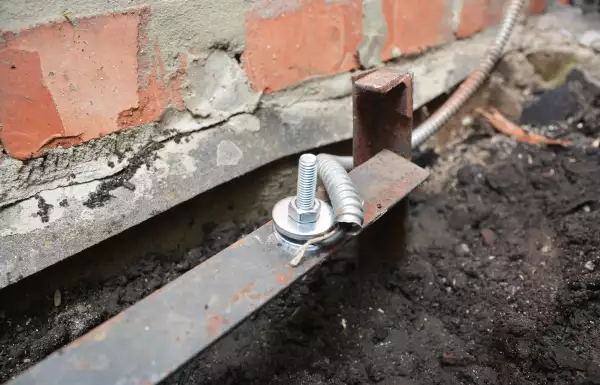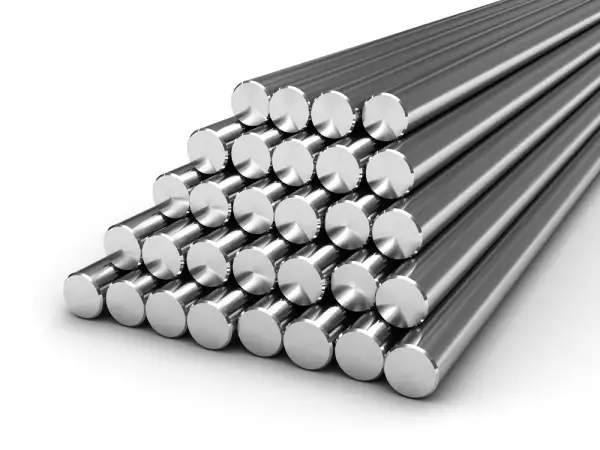A key factor in the manufacture of high-quality coppered grounding rod or coppered conductor is to provide a firm homogeneous copper coating of needed thickness with minimal impurity elements on a steel blank.
The major characteristics of good copper coating are:
To achieve the required performance, not a simple chemical deposition in a saturated solution is used, but an electrolyte deposition.
Coating plasticity
High-quality copper coating ensures that lac of cracks and exfoliation at the deformation of the grounding pin, which may occur when installing into the ground.

Adhesion ( "sticking") to the base
High copper coating adhesion value to a steel base ensures absense of exfoliation at high mechanical stress, for example, immersing the grounding rod into the ground.
This adhesion allows to squeeze out the threads on the rods after the copper coating using roll equipment that ensures preservation of the copper layer thickness on the thread (250 microns), which can not be done using the technology to create the thread before copper coating.
 to the base.jpg)
The thickness of the copper layer
Required thickness of the grounding rods is not less than 250 microns (0.25 mm). This value characterizes mechanical resistance of the coating - while diving the rod, it is subject to friction and scratching by the solid elements in the soil, which results in reduced thickness of the copper layer.
The remaining layer should guarantee at least 30 years of the service life of the ground rod in aggressive soils (100 years in normal soils).

Copper coating tests
Copper coating tests
A series of tests of copper coated rods by GALMAR (Poland) was held together with comparing of its quality to the quality of rods coating of other manufacturers.
At the end of the video a grounding rod is shown with a completely torn copper coating after rod deformation. Such a damage leads to the appearing of electrochemical corrosion between two metals with high difference of potentials at the place of exposed steel. The steel is completely destroyed in about 2-3 years.
The reasons of such a defect are: violation of a technical process, unskilled technical staff at the production, cheapening of the manufacture with unacceptable methods.
This test complements the first one.
It describes the significant reliability of the "sticking" of the copper coating to the steel base. At the end of the video a grouding rode, compared with the original one, is shown, the coating of which was peeled off along its entire area (as can be seen in the first test).
The last test simulates assembly of the coppered pin in the rocky ground, where great mechanical impact is put on the coating: the sharp edges of the stones, scratching the copper.
It is shown than a thin copper layer is being scratched, exposing the steel (for more details about the consequences see comments to the first video). A thick copper layer comes out as a "soap" when removing a tight ring from a finger. Due to its softness this layer prevents the sharp edge of the stone to penetrate deep into the coating, causing it to slide along the surface of the rod.
Related Articles:
 Why Cannot Vertical Earthing Devices Be Installed Close to Each Other?
Why Cannot Vertical Earthing Devices Be Installed Close to Each Other?

 Electrolytic Grounding in Permafrost Soils: Should Vertical of Horizontal Electrodes Be Used?
Electrolytic Grounding in Permafrost Soils: Should Vertical of Horizontal Electrodes Be Used?


